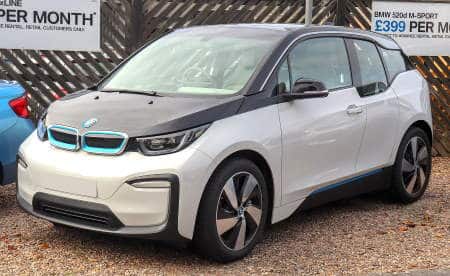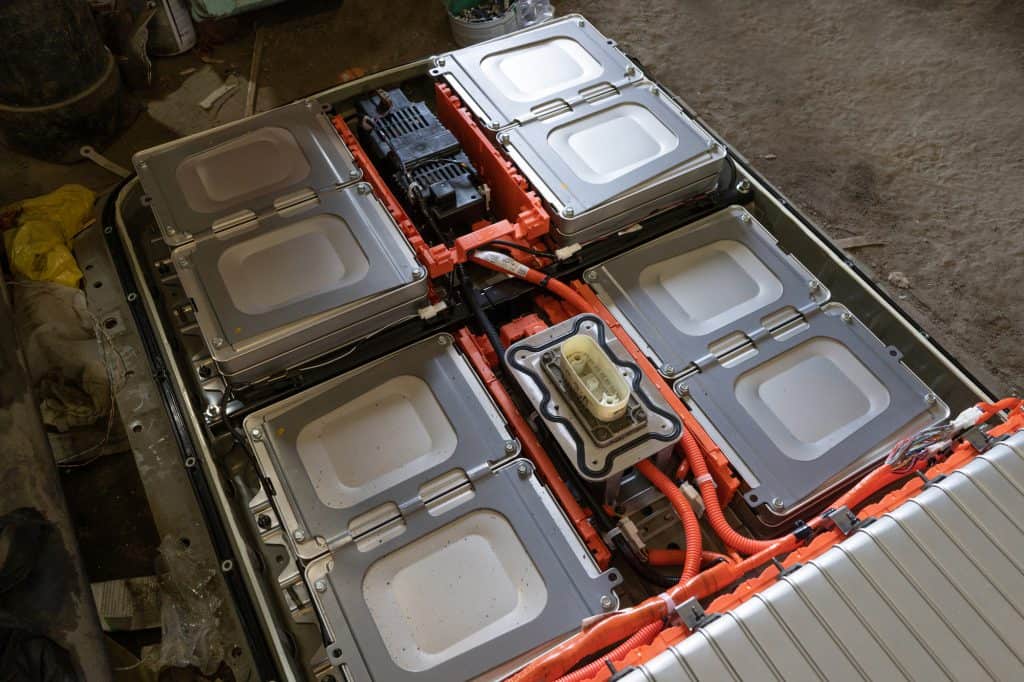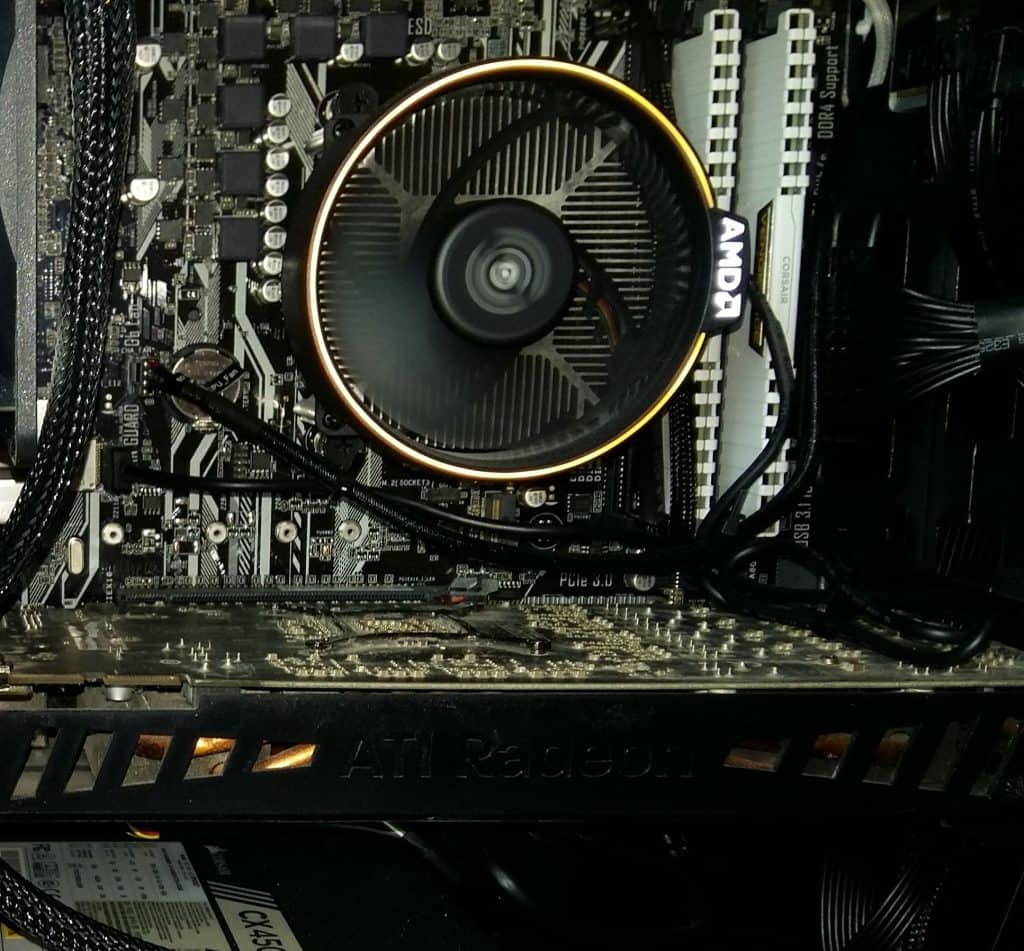The BMW i3 has been a great electric success story for BMW. It has allowed them to get a great start on the electric vehicle market, while also being able to offer some unique additions to the car like the range extender option. Whether you have the range extender or not, the principal power source of the BMW i3 remains its lithium-ion battery, either an 18.2kWh, 27.2kWh or 37.9kWh unit.
These batteries run very hot when powering something as large as a car, and so their cooling requirements are enormous. Among the many battery cooling technologies available, which one does BMW employ for the i3? Why do the batteries need cooling at all when there are so few moving parts within an EV? These questions and others will form the core of today’s blog.
How is the BMW i3 Battery Cooled?

Like many electric vehicles, the BMW i3 uses a system of indirect liquid cooling in order to achieve safe cooling on the battery pack. These cooling systems are, in many ways, quite similar to those used in an internal combustion engine vehicle, using a series of metal pipes to circulate coolant that transfers heat away from the battery pack.
The principal ingredient in the coolant that circulates through the pipes is either glycol or polyglycol, and when we say “principal” ingredient, we really mean it. The coolant is about 99 percent one of these two things. Coolant makers differentiate themselves by the remaining 1 percent that they put into the formula.
The additives that are placed into the final 1 percent of the vehicle are what really make the cooling system sustainable. It is these additives that make the formula protective against things like rust and scale from forming in the pipes.
Those cooling pipes and that cooling system has to serve the i3 for all of its life. Though the coolant will be flushed out at certain intervals, the pipes themselves need to last much longer.
The fact is that liquid cooling is used in the BMW i3 and other electric vehicles because it is currently the only viable solution for cooling electric vehicle battery packs.
The importance of an effective cooling system in your BMW i3 (or other EV) we will cover in the next section. After that, we’ll also explain what other cooling systems have been explored only to determine that indirect liquid cooling is the best bet.
Why Do EV Batteries Need to be Cooled?

EV battery technology is being improved all the time. It’s not just BMW and the i3, either. Major players in the EV battery game include companies like Tesla, GM, Nissan and many others. Right now, we measure most of our achievement and advancement in battery technology in total range, and also in fast charge capability.
A battery that lasts longer between charges, and can easily withstand super high-voltage DC charging without wearing the battery out too quickly are held up as the “holy grail” of EV power solutions.
While these two factors are being improved in leaps and bounds, the problem of cooling these increasingly powerful battery packs remains an issue. GM have been learning this the hard way with their recently released Chevrolet Bolt models, which are now being recalled because of fire risks.
Those fires in the Chevy Bolt are being caused by overambitious battery design, trying to pack too much into too small a space, and this all connects with the importance of an effective cooling system — EV batteries run HOT.
EV Batteries Unleash Heat
The first reason, therefore, you need a cooling system is that a discharging EV battery produces a great deal of heat. What’s more, the more you push your BMW i3 or other EV, the more heat that it starts to generate.
More speed and power means more electrical energy being transferred, which in turn increases the by-product of heat. If there were no cooling system, the battery would simply stop working at whatever point it reaches its maximum heat threshold.
EV battery packs, as with just about every other battery out there, are designed to work within a specific extreme temperature range both hot and cold. If you’ve ever tried to use your smartphone on a freezing cold day outside, you start to get the picture that batteries don’t do so well in extreme temperatures.
Without a cooling system in your BMW i3 or other EV, therefore, the battery would also stop working when it hits a high temperature. The optimum temperature range for most EV battery packs is 20-40 degrees Celsius (68-104 degrees Fahrenheit), and a proper cooling system will help it to stay within that range.
Stability Issues
Another reason you need an effective cooling system in your BMW i3 or other EV is that battery temperature not only needs to be kept within a certain range, but it also needs to be kept as constant and as steady as possible. In other words, heat has to remain evenly distributed through the battery pack. Uneven distribution can lead to uneven degradation in the individual cells, which will adversely affect the battery’s capacity.
Even worse, uneven distribution leads to issues with stability in the battery, which can even result in a life-threatening fire explosion in the battery.
It is for this huge safety reason that EV developers continue to invest so much in battery technology and cooling systems. Preserving the integrity of the individual cells protects the battery pack, and makes it both safe and effective.
What Other Cooling Solutions are There?
As we mentioned further above, liquid cooling is regarded by many as the only mainstream viable technology for the issue of battery packs overheating in electric vehicles. Some companies, such as Nissan, have held out a long time (see below for more), but even now are making the switch on newer models.
Liquid cooling systems have a high heat capacity, are efficient, compact and fit in well with the overall battery and EV structure. So far, they also have proven to be the best performers when it comes to cooling needs. But what other technologies have been tried before?
At least three other methods of cooling have been tested or tried out in models, but all of them ultimately failed to prove themselves practical when compared to liquid cooling. What are these other three technologies?
- Air cooling
- Fin cooling
- Phase change material
Air Cooling:
The keyword when it comes to air cooling is “convection.” Air cooling technology uses convection to transfer heat away from the battery pack. Air runs over its surface and carries away the heat that the battery pack is emitting. It is the simplest, some might say the crudest method of cooling the battery, but in temperate climates it can work.
The operative phrase there was “in temperate climates,” because the trouble air cooling systems have is that they aren’t efficient enough, especially in hot climates. This inefficiency, as we explained in the previous section, can lead to some very serious safety concerns. Nissan tried air cooling on the early versions of the Nissan Leaf electric vehicle.
The battery capacity was fairly small — only 24 kWh — and when sold in temperate zones with no heat extremes, the system worked fairly well. Those driving their Leaf on city streets at low speeds had everything they needed.
Amazingly, Nissan held off from offering a liquid-cooled Nissan Leaf even right up to 2021, the leaf continued to offer only air-cooled models, both on the 40kWh and the 60kWh models. The first confirmed Nissan EV production model to have all liquid cooling as standard will be the upcoming longer-range Ariya model.
Fin Cooling:
The use of cooling fins was held up as a terrific standard by many in the world of consumer electronics where it continues to be a go-to method for cooling:

Cooling fins actively increase the surface area of the battery and therefore increase the rate of heat transfer. The heat comes from the battery, conducts into the fin, and then out to the air again via convection.
If they work so well and the gargantuan electronics industry relies on them so much, why can’t they be used for electric cars. In principle, they do work for EVs as well, but the problem is that adding the fins adds a lot of additional weight to the car.
In fact, it can add as much as 40 percent to the total weight of the cell. Battery makers quickly learned that adding fins and their extra weight quickly outstripped any benefits that they were bringing, and so car makers turned away from them.
Phase Change Material:
We all learn about different states of matter as part of our basic chemistry class: solid, liquid and gas. Phase change materials are so named because they absorb heat energy by changing between states, specifically from solid to liquid. While changing state from solid to liquid, the material is able to absorb huge amounts of heat, and what’s more there is very little in the way of temperature change.
Their efficiency in terms of meeting the needs of the EV battery pack isn’t in question. The problem with phase change materials is that they absorb heat very effectively, but then they can’t transfer it away. If this is applied to use in buildings, then it works quite well, but not for an EV battery pack, which requires the heat to be transferred away so that a meaningful temperature drop can be achieved.
Liquid Cooling Wins Out
Of all the above systems, only liquid and air cooling have ever proven viable, and of the two liquid cooling has far more potential. Even Nissan is seeing the limitations of the air-cooled model, which is why their much-anticipated Ariya crossover model will be liquid cooled.
Liquid cooling is also championed by Tesla founder, Elon Musk. Liquid cooling is also used in the BMW i3, BMW i8, Jaguar I-PACE, Ford Focus Electric, all Tesla models and more.
Other data has also proven that liquid cooling is far better for cars than air cooling. Geotab tested a 2015 Tesla Model S and a 2015 Nissan Leaf. The former is liquid cooled, and only showed an annual degradation of 2.3 percent, compared to 4.2 percent in the Nissan Leaf.
Can the Battery Cooling System Break?

Coolant within the liquid cooling systems of many electric vehicles lasts much longer than it does in a conventional internal combustion engine car. Nissan, for instance, needs a change once every 15 years or 125,000 miles. Tesla’s lasts for 8 years or 100,000 miles, which is also about the number of miles it should last in your BMW i3.
If you get a coolant leak, fixing it shouldn’t cost more than $100 including all parts and labor, but it depends on how serious the leak is and how extensive the damage. If your cooling system has been heavily damaged, then there’s a good chance your battery pack has also been damaged, in which case repairs would be very costly, especially if you had to replace the battery pack.
The most worrisome everyday issues with the coolant system are leaks, overheating by not having the right kind of coolant, or insufficient coolant, and corrosion being caused within the metal pipes that carry the coolant to and fro. The cooling system should last as long as the life of the vehicle, however.
Conclusion: Never Lose Your Cool
At the end of the day, it’s important that your BMW i3, or any other EV that relies on a lithium-ion or other battery pack, is properly cooled. An overheating battery is not just a huge energy drain making the battery less efficient and draining its overall lifespan, but it’s also a serious fire hazard as some drivers around the world have already learned the hard way.
Look out for symptoms that your battery is overheating. If it suddenly starts getting too hot, it’s most likely a result of a breakdown in the cooling system. The expense may be high to fix it, but it’ll never be as high as having to replace your entire battery pack, or to replace your electric vehicle altogether. It can’t function without a properly cooled battery, and there’s no way around that fact.
1 comment
Are there any vehicles that use a heat pump for cooling/heating? I assume all models at the moment just use a radiator to circulate the coolant to cool.